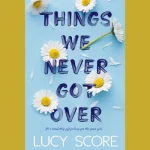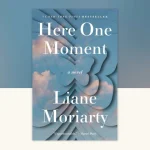I grew up a few blocks off Kensington Avenue. Not the version of Kensington you see in crime dramas with cinematic lighting and exaggerated grit—but the real place. The one with corner stores that still sell penny candy, block parties that spill into the streets until the cops show up, and neighbors who know you by name—and your mom’s, your aunt’s, and even your cousin’s from down the block. So when I picked up the Long Bright River Book, I didn’t just read it—I measured it against reality.
Let me start by saying this: Liz Moore’s writing is genuinely strong. It’s lyrical without being overly flowery. But if you’re expecting an accurate portrayal of Kensington’s heartbeat—or a story that doesn’t trim its complexity to fit inside a thriller—you may be disappointed.

Content
The Setting: Close, But Not Quite There
The story plays out in a version of Kensington that feels both familiar and strangely distant. The abandoned rowhomes? Check. The ever-present rumble of the El train? Check. The opioid crisis that’s taken root in the area? Sadly, also a check.
But even as Long Bright River borrows from real-life issues—broken homes, fractured families, addiction—it often feels like the neighborhood is seen through a frosted window. Some geographical cues feel off. Streets are mentioned, landmarks name-dropped, but if you’re actually from here, you can tell this is more of an emotional map than a literal one.
The Sisters: Mickey and Kacey
At the center of the Long Bright River Book is the relationship between Mickey, a police officer, and her estranged sister Kacey, who is battling addiction. Moore smartly avoids black-and-white characterizations—Mickey isn’t a pure hero, and Kacey isn’t merely a victim. They’re both deeply flawed, layered, and sometimes hard to sympathize with—which makes them feel real.
Still, Mickey feels emotionally distant at times. She patrols the same streets where she grew up, yet her connection to them seems thin. Maybe that’s intentional—a way to show the trauma that numbs her—but I’ve known cops who grew up in Kensington. They walk these blocks differently. They nod to the elders, they know who’s hustling and who’s just hanging out. That familiarity is something the book doesn’t always capture.
The Long Bright River Killer
There’s a mystery element too—a Long Bright River Killer who’s targeting women. The police response is sluggish. Sound familiar? It should. Philadelphia has faced its own tragedies involving serial predators and missing women, especially in overlooked communities.
Moore treats the topic with care, but honestly, the killer subplot isn’t what sticks with you. It’s the emotional trauma—the damage between two sisters—that hits hardest. The mystery feels secondary, almost like it was added to boost the novel’s market appeal. But Kensington doesn’t need a fictional villain. The real horrors—poverty, addiction, neglect—are more than enough.
What Moore Gets Right
To be fair, there are moments where Moore nails it. There’s a scene where Mickey drives through her childhood block and reflects on what’s changed. That moment? Spot-on. The isolation that can creep in even when you’re surrounded by people? Absolutely real. The way memory clings to every corner? Yep.
The prose is clean and occasionally stark, but it does give Kensington space to breathe. Moore avoids romanticizing addiction or sensationalizing poverty. That balance deserves credit.
For Readers Outside Philly…
Here’s the thing: if you’re not from Philly—especially not from Kensington—you might finish Long Bright River thinking you’ve gained some deep insight into the city. But this place is more than a backdrop. It’s more than boarded-up storefronts and emergency sirens. More than a news story.
And if you are from here, you’ll likely have a running commentary in your head as you read. I did. “That block doesn’t look like that.” “No one really talks like that.” “What happened to the old sandwich shop on Lehigh?” But maybe that’s what makes it powerful—it forces you to engage, to question, to reflect.
Final Thoughts
Long Bright River isn’t perfect. It doesn’t perfectly capture Kensington, addiction, or sisterhood. But it tries—and that effort matters. It holds up a mirror. Not a perfect one. Maybe one that’s cracked, a little dusty. But a mirror nonetheless.
If you’re looking for a dark thriller, you’ll get one. But you’ll also find a story about family, grief, and the heavy silence of returning home. And if that doesn’t scare you off—go ahead and read it. Just remember, the real Kensington is still here, pulsing with stories far more complicated than any single book can tell.
If you enjoy emotionally intense stories like Long Bright River, you might also be drawn to the dark, war-torn fantasy of The Poppy War.
FAQs
What is the book Long Bright River about?
A gripping crime‑drama novel by Liz Moore about two Philadelphia sisters—one a cop, the other caught in addiction—set against the opioid crisis in Kensington.
Will there be a season 2 of Long Bright River?
There’s currently no official word on a second season—although the show has stirred interest, no renewal or release date has been confirmed.
Is Long Bright River really filmed in Philadelphia?
Scenes are partly shot in Philly and surrounding areas, though many interior or street sequences were filmed elsewhere, making it feel authentic but not fully local.
Is Long Bright River worth watching?
If you appreciate character‑driven storytelling and emotional nuance over straight thrills, it’s worth your time—especially for Philadelphia or mystery fans.

Julius’s the resident literary connoisseur. He dissects classics and uncovers hidden gems. Expect his insights to enrich your reading journey, one page at a time.













